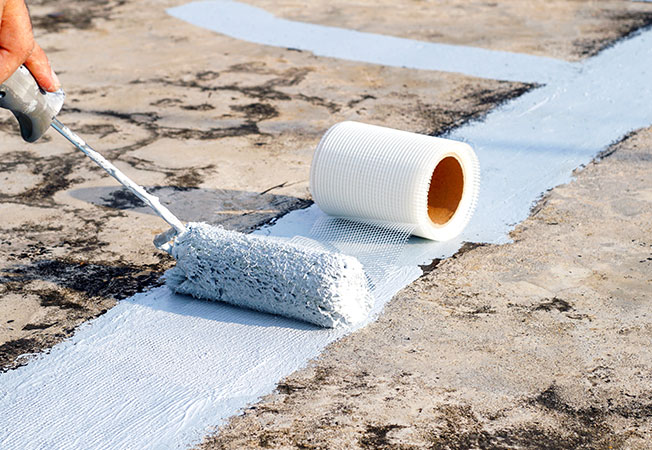Waterproofing solutions is a key aspect of preserving the structure and lifespan of every house or property. Whether More helpful hints are a property owner seeking to protect your investment from the damaging effects of leaks or a builder aiming to create durable structures, understanding how to pick the best waterproofing materials is important. Water damage can lead to costly repairs, mold growth , and significant problems, turning proper waterproofing a priority for all homeowners.

In this ultimate guide, we will review the many aspects of waterproofing, from recognizing the clues that your building needs waterproofing to comprehending the differences between indoor and exterior methods. We will also delve into the widespread fallacies surrounding waterproofing, allowing you to make educated choices. With the right knowledge and materials, you can safeguard your property from water-related problems and avoid significant sums in subsequent repairs.
Understanding the Value of Moisture Protection
Moisture-proofing is vital for any building as it safeguards structures from moisture damage, which can lead to costly repairs and considerable loss of property value. Water infiltration does not only pose a risk to physical integrity but also to the well-being of occupants, as dampness can cause mold and mildew growth. By utilizing reliable waterproofing measures, property owners can establish a robust defense against the detrimental effects of water.
Ignoring waterproofing can be a expensive mistake. The unseen damage from water intrusion can lead to extensive repair bills that far surpass the original cost in waterproofing products and services. For instance, untreated moisture issues in basements can jeopardize the foundation, resulting in serious structural problems. Thus, understanding the imperative nature of waterproofing can save you considerable amounts of dollars in the long run.
Moreover, waterproofing adds to energy efficiency in buildings. When walls, roofs, and basements are adequately waterproofed, they help maintain uniform indoor temperatures, reducing the need for excessive heating or cooling. This not only lowers utility costs but also improves overall comfort. Furthermore, a well-protected property is more robust in extreme weather conditions, ensuring lasting safety for your investment.
Key Factors In Terms Of Selecting Water-Resistant Products
When selecting waterproofing solutions, the initial key consideration is the particular area you need to protect. Different surfaces, such as basements, roofs, and washrooms, have unique needs. For instance, basement waterproofing often needs solutions that can handle hydrostatic pressure, while roof waterproofing demands products that resist UV damage and temperature fluctuations. Identifying the exposure levels and moisture conditions of the area will help in choosing the most product.
Another important factor is the kind of materials used in the waterproofing solution. Look for high-quality materials that offer strength and longevity. Such as, membranes and coatings should be adaptable enough to absorb building movement while maintaining a solid barrier against water penetration. Additionally, consider if you favor a solvent-based, water-based, or cementitious solution, depending on the intended application and ecological impact.
Finally, the ease of application is crucial. Some waterproofing solutions are designed for DIY use, while some may need professional installation. Think about your skill level and if you have the tools needed for the job. It’s also wise to review the manufacturer’s instructions and recommendations regarding application conditions, such as temperature and humidity, to ensure best performance.
Common Waterproofing Solutions and Strategies
In the context of defending your home from liquid damage, there are numerous effective waterproofing solutions to think about. One popular approach is the application of waterproof membranes, which form a obstacle that prevents water from penetrating surfaces such as basements, partitions, and roofs. These membranes can be fabricated from different materials, including rubber, asphalt, or PVC, and are fitting for both interior and outside applications. Proper installation is essential to ensure that these membranes operate effectively, thus shielding your assets from seepage and infiltration.
An additional effective technique is the use of sealant materials and coatings. These products are put on immediately to surfaces and act as a barrier against water. For instance, waterproofing coatings can be used to surfaces and roofs to prevent fungus and mildew growth growth, particularly in bathrooms and kitchens. Also, elastomeric coatings are excellent for flat roofs, providing adaptability and strength to withstand harsh weather conditions while keeping liquid out. Selecting the appropriate sealant for each specific area of your property is crucial to ensure durability and maximized protection.
For outdoor structures, consider putting in drainage systems and downspouts to redirect water away from your home. Trenches, submersible pumps, and channel drains can efficiently reduce the risk of water pooling around foundations and cellars. Combined with proper grading of the terrain, these drainage system limit the likelihood of water intrusion. Implementing a multifaceted approach with these techniques ensures durable protection against moisture issues, ultimately safeguarding you from expensive repairs in the long run.
